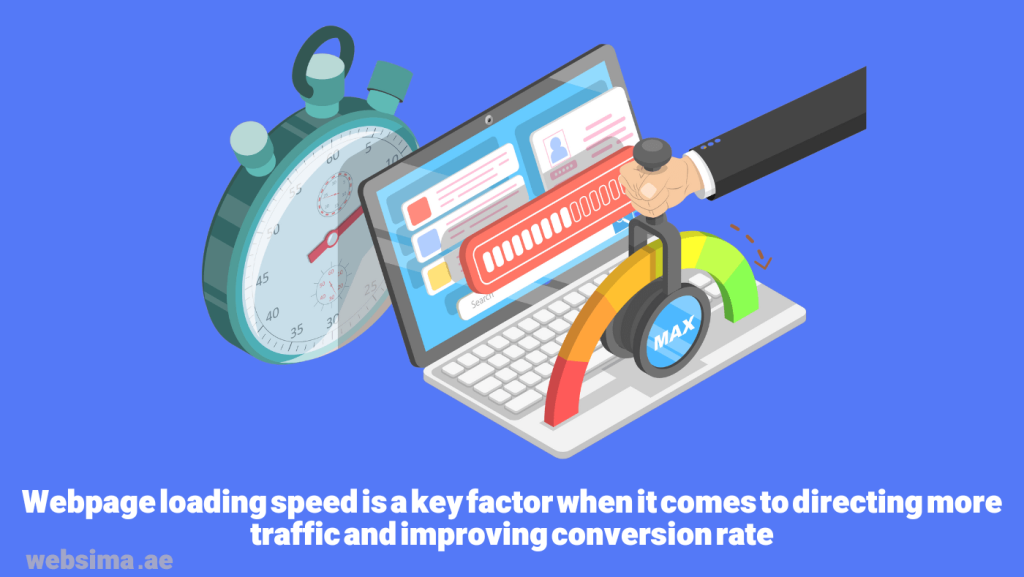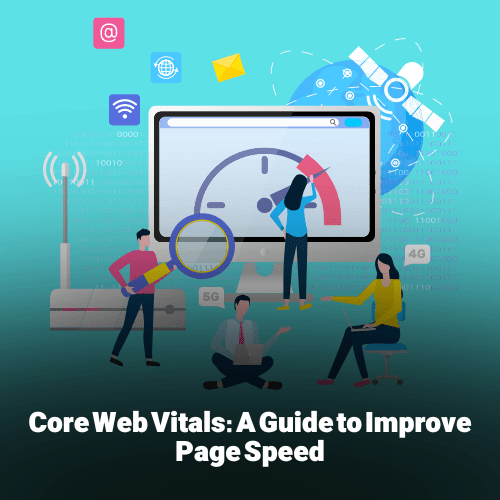Core Web Vitals: A Guide to Improve Page Speed
In today’s digital world, the competition is very tight across all online businesses. Business owners, website developers and SEO professionals are working hard to evolve day by day, in order to have and keep the higher hand in the market.
Webpage loading speed is a key factor when it comes to directing more traffic and improving conversion rate. In particular, in ecommerce websites and online stores, due to presenting a wide range of products with many images, the page loading speed plays a crucial role. As such, if you are planning for an ecommerce web development in Dubai, or any other type of online businesses, this article is for you.

Why is page speed important?
Web page speed does matter. Internet users are not tolerant enough to wait more than a couple of seconds for a web page to load completely. Based on Google research, increasing the loading time from 1 second to just three seconds, increases the probability of a bounce by 32 percent! Such a huge loss, isn’t it?
Furthermore, webpage loading speed is among Google’s factors to rank a website on the result page. As such, fast loading speed not only improves UX and generates more traffic, but enhances the website’s rank in major SERPs.
Hence, keep in mind that even if you work with the best web design company in Dubai to design a shing website for your business, without a fast loading webpages, you will end up in failure.
How to measure and monitor your web pages loading speed?
There are quite a few powerful online tools that you can take advantage of, to measure and monitor your web pages speed from time to time. By using tools like Google PageSpeed Insights, you will be able to measure and track the loading speed of your webpages as well as identify the areas that need improvement.
Webpagetest, in partnership with Cloudflare offers a wide range of free tests to measure your web pages loading speed.
What are Core Web Vitals and how do they impact user experience?

According to Google, Core Web Vitals have been a ranking factor since May 2021. Core Web Vitals are measuring metrics to analyze the user experience on a website. In other words, these metrics measure how fast a user is able to interact, how easy is the navigation and what results a user will be receiving. Core Web Vitals are one of the key factors to consider, if you are trying for your website search engine optimization in Dubai. Core Web Vitals consists of three metrics as below:
-
Largest Contentful Paint (LCP)
LCP measures how fast the largest element can load completely and shows up in a website.
-
Cumulative Layout Shift (CLS)
CLS analyzes how easy it is for users to surf and read the page content. The metric ensures that there are no disturbances within a page for users, when intending to understand the content.
-
First Input Delay (FID)
FID measures the speed of a webpage in providing the results for users. Furthermore, FID is able to measure the responsiveness of a webpage, when users are trying to interact with it for the first time.
LCP, CLS and FID are quite important for your website performance on Google. Given the fact that the website design price in Dubai is relatively high, make sure to consider these elements at your website design phase to avoid reworks and redesign.
How to improve Core Web Vitals in general and the page speed in particular
It goes without saying that you must allocate a considerable portion of your budget for your website SEO cost in Dubai. Regardless of your project type to be either a small corporate web design or a large ecommerce, it is always a good idea to equip yourself with the required knowledge before going through your website design phase. Here, we will provide you with the most effective tips to enhance your website page speed.
1. Use Content Delivery Network (CDN)
CDN improves website speed by caching the webpages in multiple locations across the world. By using CDN, data will be provided to the requesting user from the closest server to the user rather than the main host. Hence, the responding time becomes quicker.
2. Optimize the images
Image size on a webpage influences the webpage loading speed significantly. Obviously the heavier your images in size, the slower your webpage loading speed will be. There are good tools online to optimize the images without sacrificing the quality.
3. Minify Javascripts and CSS
Your website is made of a lot of JS and CSS files. Minifying these files would slightly improve the loading speed. Even though it is minor, every millisecond counts, when it comes to speed improvement. Minifying refers to removing all unneeded elements on JS and CSS files such as comments, white spaces, etc.
4. Minimize the usage of redirects
Using redirects adds extra time to the loading time. Even though the usage of redirects is inevitable in some cases, make sure to use them as little as possible.
5. Get rid of unnecessary plugins
Having many plugins on your website would slow down your webpage loading speed. You must evaluate your plugins from time to time to see which is necessary and which is not. Do not hesitate to disable or delete the unnecessary plugins for the sake of improving your web pages loading speed.
6. The number of HTTP requests must be reduced as much as possible
Browsers must be sending HTTP requests to all elements on a webpage in most websites. The more images, CSS and scripts on a website, the more requests must be sent by browsers. These HTTP requests slow down the loading speed, so the number of elements on a webpage must be kept at a minimum, if you want a fast loading webpage.
Core Web Vitals and web page speed optimization summary
Webpages loading speed plays a crucial role in improving UX and SEO optimization. To make things easier for web developers and website designers, Google has introduced three important metrics called Core Web Vitals. LCP, CLS and FID are the measurement factors that are provided by Google in order to measure the webpage loading speed, how easy users are able to interact with a website and how fast a user receives his needed content and information.
Core Web Vitals in general and webpage loading speed in particular are important factors in order to have an optimized website.
Websima DMCC, as the leading digital service provider with more than a decade of market presence and a proven track record of success is always happy to help.
If you are in need, feel free to contact us and book for your free consultation meeting with our talented team.
Our team will discuss your projects in detail with you and get back to you with the best solution.





